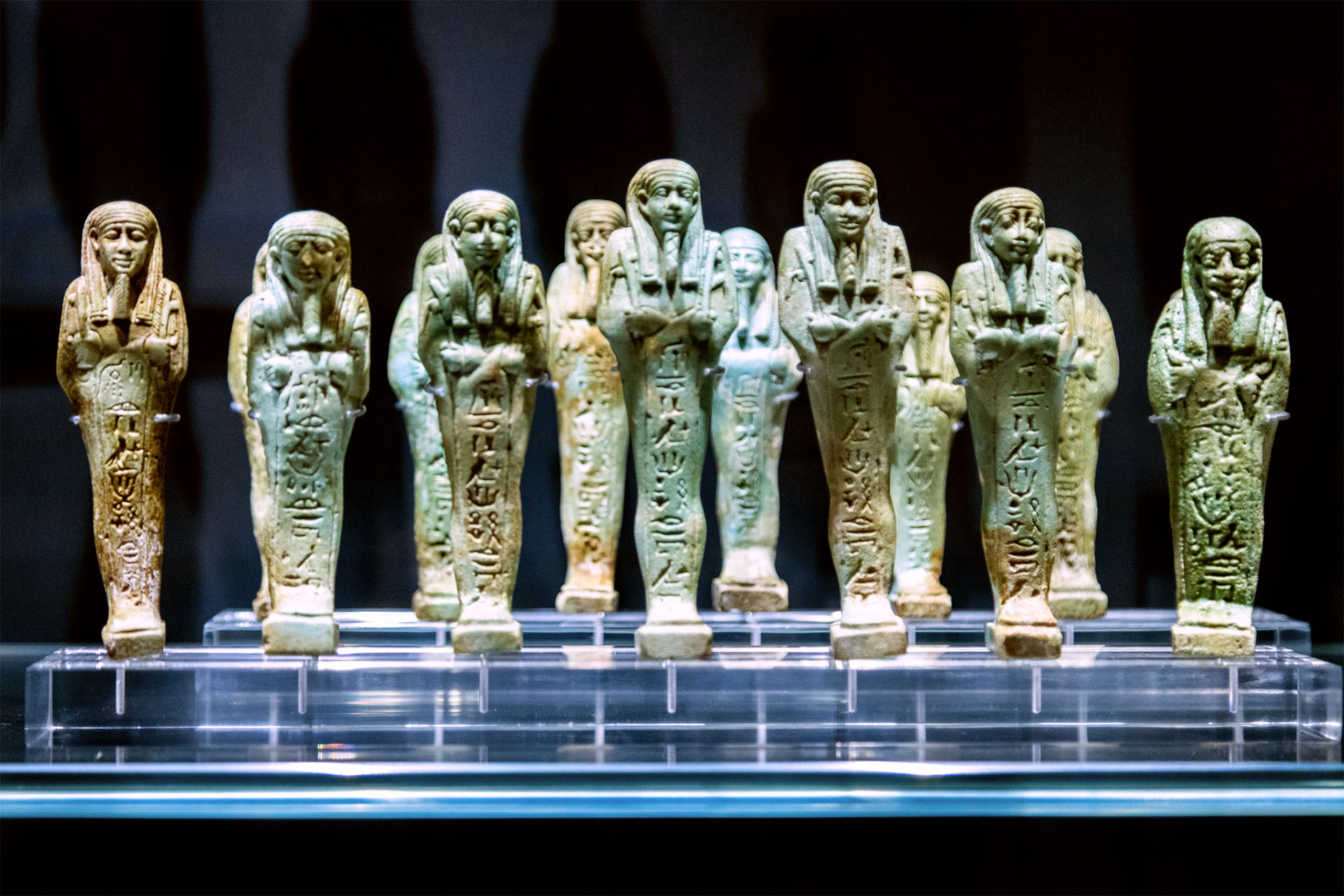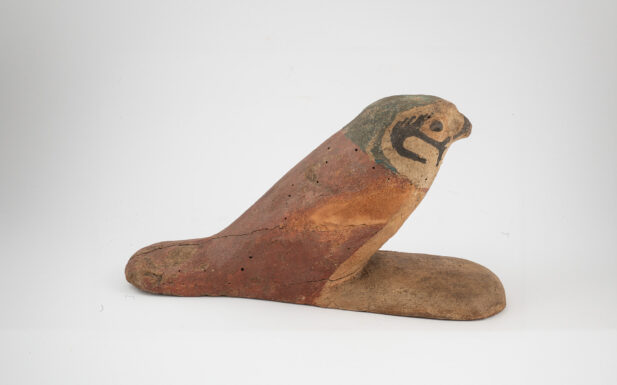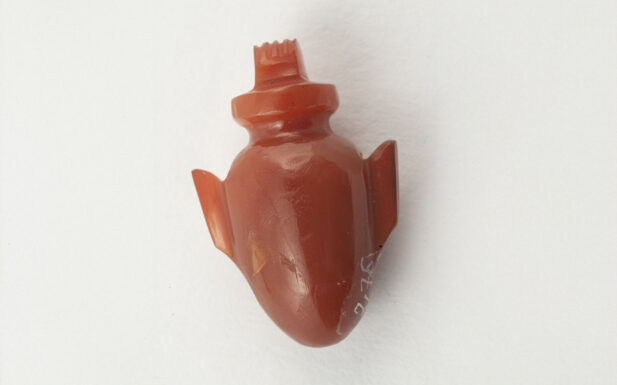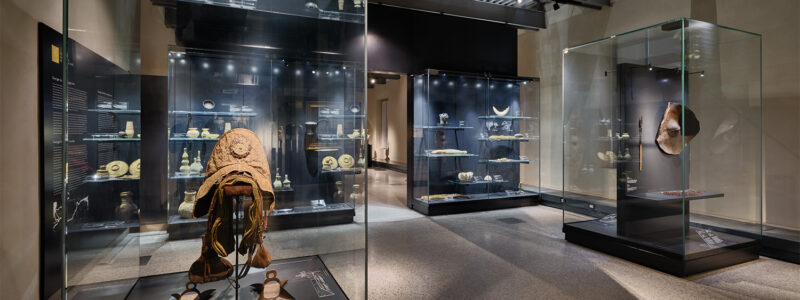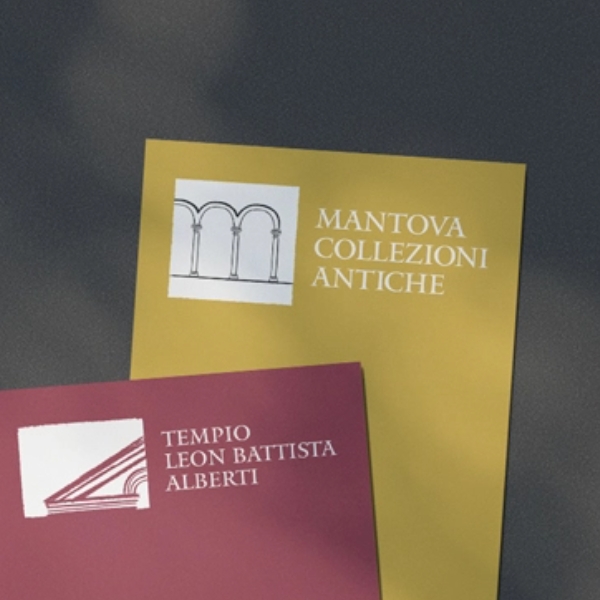Shabtis are statuettes attested in Egyptian burials from the Middle Kingdom (2046-1794 BC) to the Ptolemaic Era (306-30 BC). From one or a few specimens for funerary dowry, their number increases over time to many hundreds. They were to take the place of the deceased in the agricultural work of the afterlife, magically reanimating themselves thanks to the texts inscribed on their bodies. The most common text is the sixth chapter of the Book of the Dead, a set of magic formulas that helped the deceased on the difficult journey to the afterlife. Most of the ushabti have mummiform likenesses, imitating the god Osiris, while statuettes in living garb are rarer and date to the New Kingdom.
Among the New Kingdom (1539-1070 BC) specimens in the Acerbi collection, the two stone statuettes of the ‘scribe for the offering table’ Ramose no. 1, one mummiform and the other in living dress with djed and tit amulets clutched in their hands instead of the usual agricultural tools, deserve attention. The most significant groups of Late Epoch ushabti (664-332 BC), all in faïence, can be traced back to the ‘first reader priest’ Horudja ( 26th dynasty, 664-525 BC) no. 2 and members of the clergy of Mendes (Eastern Delta), Saiset ( 30th dynasty, 380-343 BC) no. 3 and Uahibra ( 30th Dynasty, 380-343 BC) no. 4, possibly belonging to the same family.
New Kingdom (1539-1070 BC) – Ptolemaic Era (306-30 BC)
wood, stained and painted wood, stone, faience

